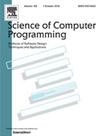Human-in-the-loop online just-in-time software defect prediction: What have we achieved and what do we still miss?
IF 1.4
4区 计算机科学
Q3 COMPUTER SCIENCE, SOFTWARE ENGINEERING
引用次数: 0
Abstract
Background. The Online Just-In-Time Software Defect Prediction (O-JIT-SDP) employs an online model to predict whether a new software change will introduce a bug. Previous studies have neglected to consider the interaction between Software Quality Assurance (SQA) personnel and the model, potentially missing opportunities to refine prediction accuracy through human feedback. Problem. A recent study introduced the first Human-In-The-Loop (HITL) O-JIT-SDP framework called HumLa, integrating SQA staff feedback without accounting for inspection time to boost the prediction performance of O-JIT-SDP. However, upon a thorough revisit of HumLa, we find that while certain aspects of the HITL O-JIT-SDP system appear feasible in ideal conditions, they prove impractical in real-world context. Objective. We aim to reformulate HITL O-JIT-SDP, which are crucial yet absent for practical application. Method. We propose four crucial enhancements to facilitate practical application of HITL O-JIT-SDP. First, we advocate for the use of observed labels rather than ground-truth labels to evaluate online classifiers in real-world settings. Second, we suggest refraining from utilizing the entire data stream for normalizing features of each new instance, as was done in HumLa. Third, we propose incorporating non-zero SQA inspection time into the formulation of HITL O-JIT-SDP. Fourth, we introduce real-time statistical classifier comparison into the HITL system. Result. Our replication uncovers that the performance evaluation of HumLa under a practical scenario significantly deviate from the originally reported performance under an ideal experimental scenario, potentially diminishing the promise of HITL O-JIT-SDP. Furthermore, with our enhanced HITL O-JIT-SDP framework, we revisit a fundamental question in O-JIT-SDP: the benefits of HITL integration. Our experimental findings demonstrate that HITL not only enhances O-JIT-SDP when SQA feedback surpasses Bug-Fixing Commit (BFC) feedback (by providing training commits with superior label quality in less time) but also improves O-JIT-SDP even when SQA feedback delay equals that of BFC feedback (by consistently delivering training commits with improved label quality). The real-time statistical analysis reveals that HITL approaches generally outperform non-HITL O-JIT-SDP approaches with a statistically significant margin. Conclusion. Our work bolsters model evaluation credibility and holds the potential to substantially enhance the value of HITL O-JIT-SDP for industrial applications.

在线实时软件缺陷预测:我们实现了什么,我们还错过了什么?
背景。在线即时软件缺陷预测(O-JIT-SDP)采用在线模型来预测一个新的软件变更是否会引入一个缺陷。以前的研究忽略了考虑软件质量保证(SQA)人员和模型之间的相互作用,潜在地错过了通过人类反馈来改进预测准确性的机会。问题。最近的一项研究引入了第一个名为HumLa的人在环(human - in - loop) O-JIT-SDP框架,该框架集成了SQA员工的反馈,而不考虑检查时间,从而提高了O-JIT-SDP的预测性能。然而,在对HumLa进行彻底的重新审视后,我们发现,虽然HITL O-JIT-SDP系统的某些方面在理想条件下似乎是可行的,但在现实环境中却被证明是不切实际的。目标。我们的目标是重新制定HITL O-JIT-SDP,这是至关重要的,但缺乏实际应用。方法。为了促进HITL O-JIT-SDP的实际应用,我们提出了四个关键的改进。首先,我们提倡使用观察标签而不是真实标签来评估现实世界中的在线分类器。其次,我们建议避免使用整个数据流来规范化每个新实例的特征,就像在HumLa中所做的那样。第三,我们建议将非零SQA检验时间纳入HITL O-JIT-SDP的制定中。第四,在HITL系统中引入实时统计分类器比对。结果。我们的复制发现,HumLa在实际场景下的性能评估与最初报道的理想实验场景下的性能显著偏离,潜在地削弱了HITL O-JIT-SDP的承诺。此外,通过我们增强的HITL O-JIT-SDP框架,我们重新审视了O-JIT-SDP中的一个基本问题:HITL集成的好处。我们的实验结果表明,HITL不仅在SQA反馈超过Bug-Fixing Commit (BFC)反馈时(通过在更短的时间内提供具有更高标签质量的训练提交)增强了O-JIT-SDP,而且在SQA反馈延迟与BFC反馈延迟相同时(通过持续提供具有改进标签质量的训练提交)也改善了O-JIT-SDP。实时统计分析显示,HITL方法通常优于非HITL O-JIT-SDP方法,并且在统计上有显著的差距。结论。我们的工作提高了模型评估的可信度,并有可能大大提高HITL O-JIT-SDP在工业应用中的价值。
本文章由计算机程序翻译,如有差异,请以英文原文为准。
求助全文
约1分钟内获得全文
求助全文
来源期刊

Science of Computer Programming
工程技术-计算机:软件工程
CiteScore
3.80
自引率
0.00%
发文量
76
审稿时长
67 days
期刊介绍:
Science of Computer Programming is dedicated to the distribution of research results in the areas of software systems development, use and maintenance, including the software aspects of hardware design.
The journal has a wide scope ranging from the many facets of methodological foundations to the details of technical issues andthe aspects of industrial practice.
The subjects of interest to SCP cover the entire spectrum of methods for the entire life cycle of software systems, including
• Requirements, specification, design, validation, verification, coding, testing, maintenance, metrics and renovation of software;
• Design, implementation and evaluation of programming languages;
• Programming environments, development tools, visualisation and animation;
• Management of the development process;
• Human factors in software, software for social interaction, software for social computing;
• Cyber physical systems, and software for the interaction between the physical and the machine;
• Software aspects of infrastructure services, system administration, and network management.
 求助内容:
求助内容: 应助结果提醒方式:
应助结果提醒方式:


